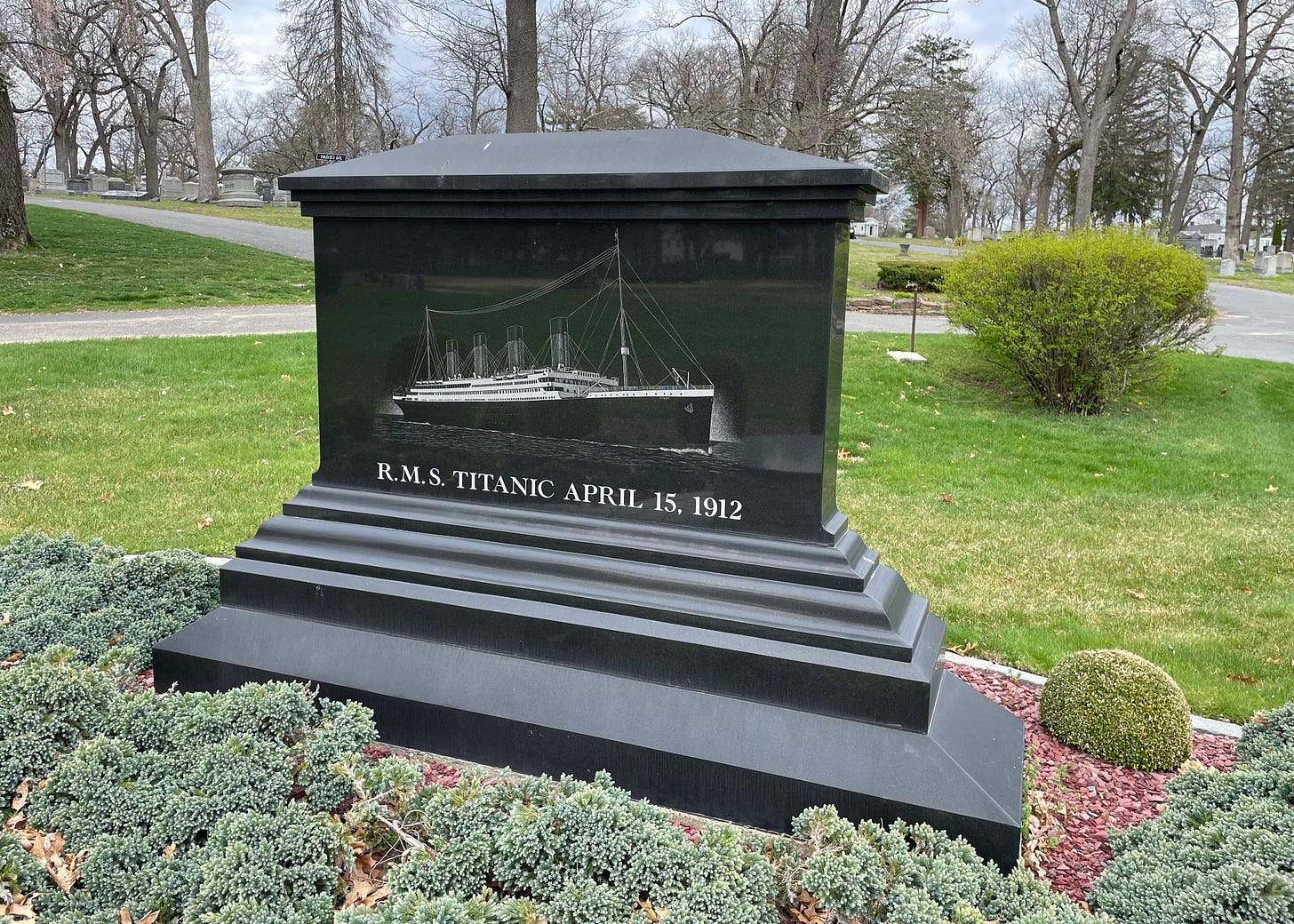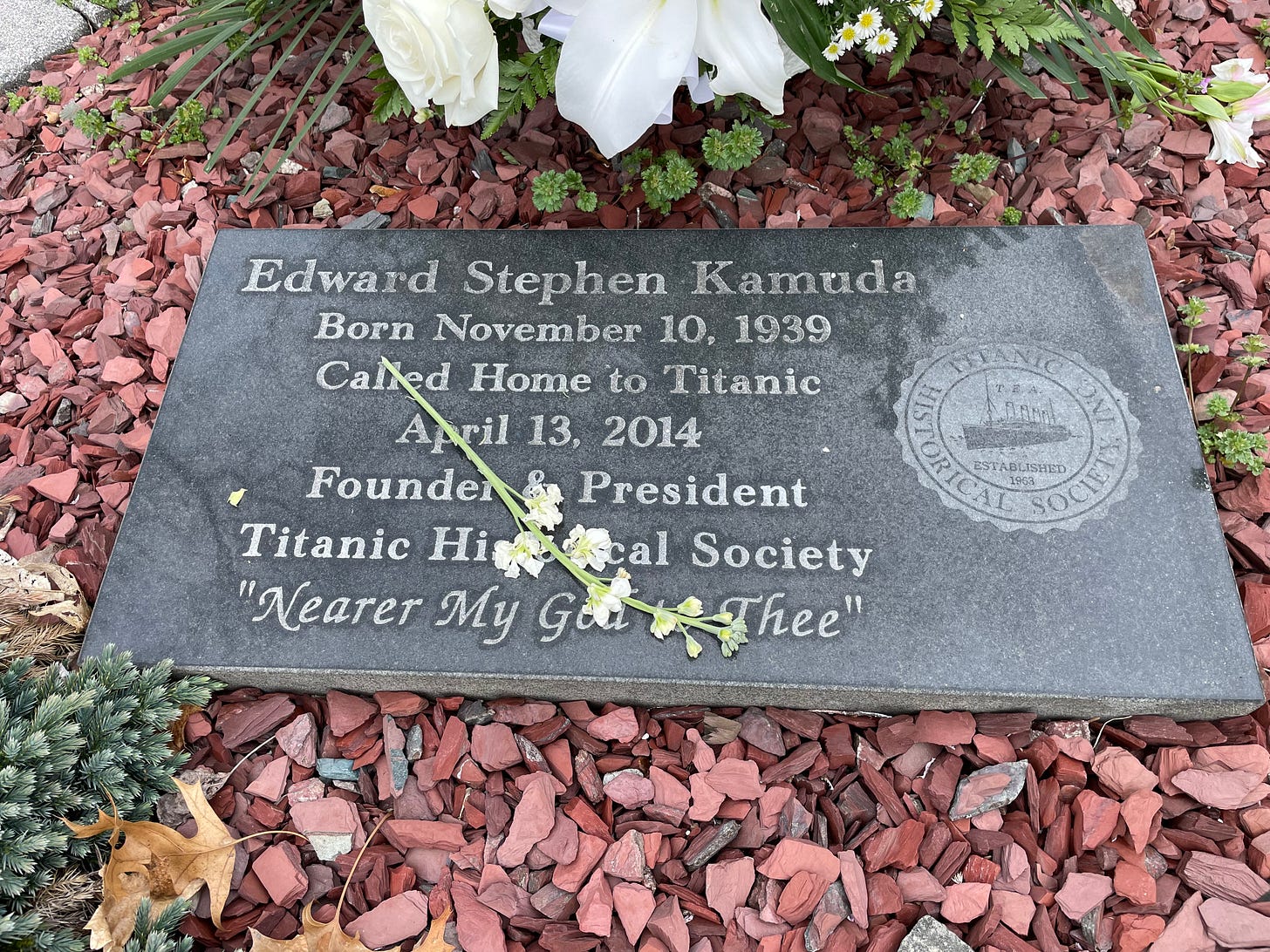When James Cameron’s Titanic debuted in 1997, I was a freshman in high school. I saw the film five times in the theater, a record for me. Every time I watched it, I lusted hard after Leonardo DiCaprio, who I’d fallen for first in Romeo & Juliet, and every time I full-on sobbed for the last hour or so of the movie. Even now, I can recall some of those tearjerker moments: the old couple in bed, the mother with her two children (also in bed?), the ship’s architect looking at the clock, Jack and Rose running through the lower decks as water filled the passageways, and of course, Jack and Rose in their final moments together amidst the wreckage.
Given my fascination with the 1997 film, I was surprised to learn only recently that there was another film called Titanic, released in 1953 with a different storyline, as well as a film based on a book about the Titanic called A Night to Remember, which debuted in 1958. The promotional materials sent to theaters for the latter movie included a directory of Titanic survivors, and one young man, Edward Kamuda (great bio at this link), used this information to send letters to all eighty-seven survivors listed, seventy-five of whom wrote him back.
After corresponding regularly with survivors, Kamuda founded the Titanic Enthusiasts of America in 1963, which in 1975 became known as the Titanic Historical Society after a survivor questioned the use of the word “enthusiasts” in association with the tragedy. Fascination with deadly events and expressing zeal for them is definitely a topic for a future post, but today I want to focus on Kamuda’s legacy, which is the preservation of memory around the Titanic.
I first learned about Kamuda a couple of weeks ago when I used the resources my sister provided in this post, Finding your local Titanic history, to search for memorials close to me. This monument at Oak Grove Cemetery in Springfield, Massachusetts, was one of the nearest, so I visited on my way home from Maine last week:
Erected by Kamuda’s Titanic Historical Society, the monument pays tribute to all aboard the Titanic, and in particular, two Springfield locals, Milton C. Long and Jane Carr. The memorial was dedicated on the one hundredth anniversary of the sinking.
Right next to this monument is Edward Kamuda’s grave, which says that he was “Called Home to Titanic” and includes the epitaph, “Nearer My God to Thee,” a reference to the last song reportedly played on the ship. The flower arrangement at his gravesite was delivered on the most recent anniversary of the sinking.
According to James Cameron, it’s Edward Kamuda I have to thank for the 1997 Titanic film that allowed me to feel that particular combination of lust and sadness that was so emotionally invigorating at fifteen. Kamuda’s efforts over decades to document first hand testimonials and preserve artifacts inspired Cameron and his crew and allowed them to construct a set so realistic that the plates in the dining room were the same china pattern used on the original voyage. For his contributions, Kamuda and his wife were given a cameo in the film. Here’s an interview with Kamuda where he describes what it was like to walk on the Titanic set and how Cameron told the cast and crew that Kamuda and his wife, through their work with the Titanic Historical Society, “kept the memory alive, and but for them, we wouldn’t be here today.”
Is there anything you would want to be remembered for remembering?







